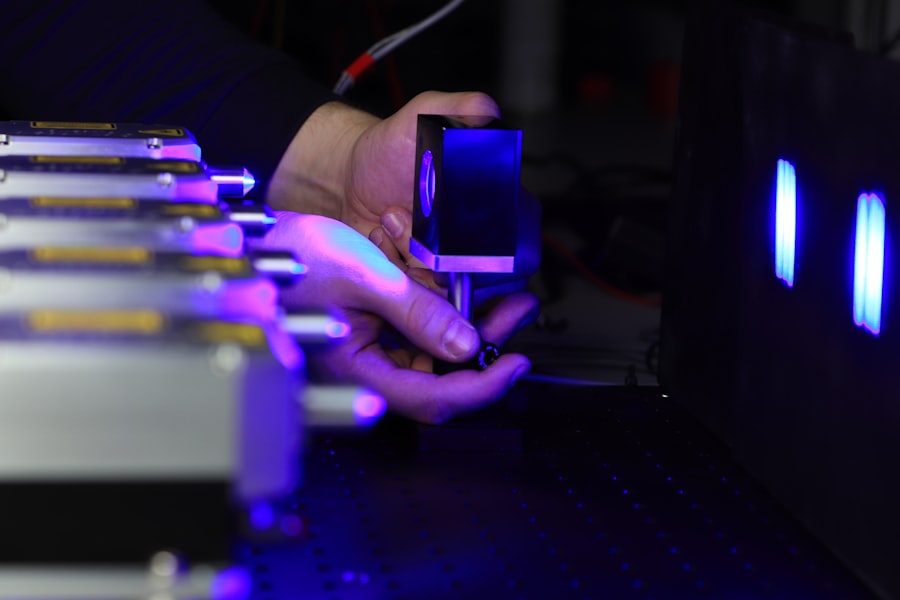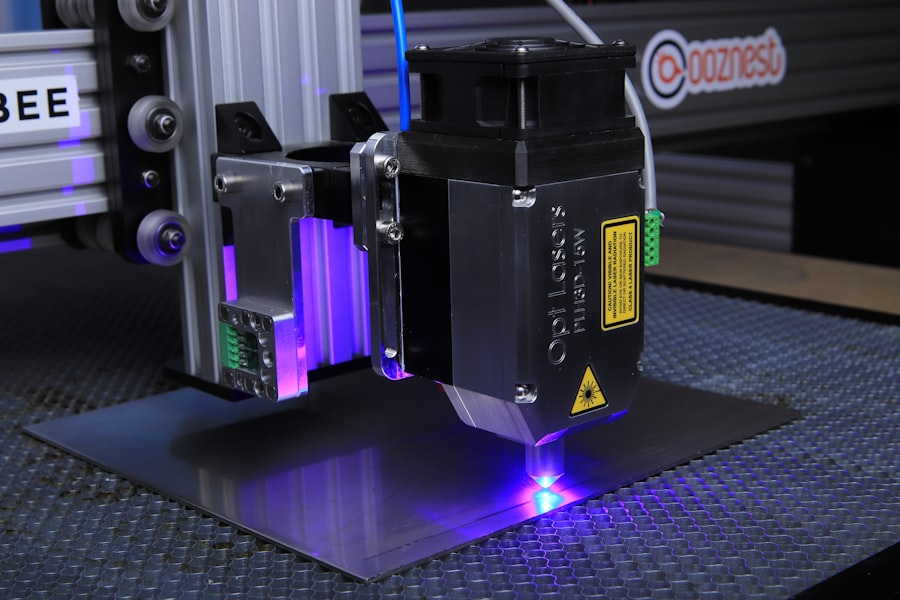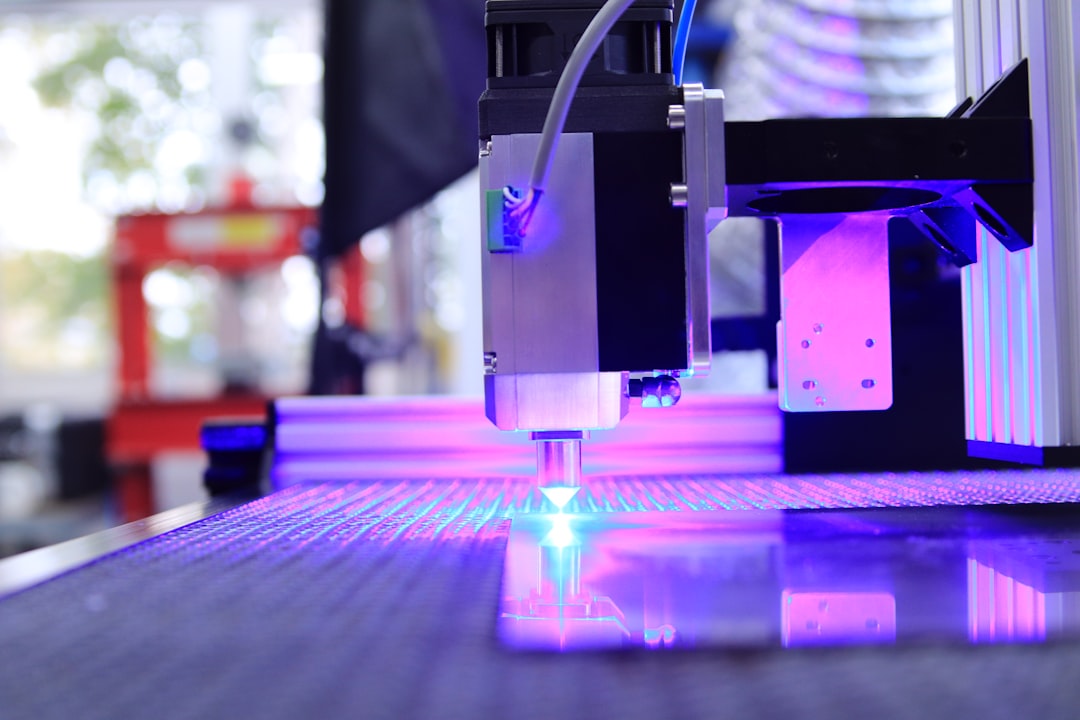Laser hair removal is a popular cosmetic procedure that utilizes concentrated beams of light to target and eliminate unwanted hair. The process begins with a consultation, where you discuss your hair removal goals and medical history with a qualified practitioner. During this initial meeting, the technician will assess your skin type, hair color, and the area you wish to treat.
This assessment is crucial, as it helps determine the most effective laser settings for your specific needs. You may also be advised to avoid sun exposure and certain medications before your treatment to minimize risks and enhance results. Once you proceed with the treatment, the laser emits light that is absorbed by the pigment in your hair follicles.
This absorption generates heat, which damages the follicles and inhibits future hair growth. The procedure is relatively quick, often taking only a few minutes for small areas, while larger areas may require more time. You might experience a sensation similar to a rubber band snapping against your skin, but many find it tolerable.
After the session, you may notice some redness or swelling, which typically subsides within a few hours. Understanding this process can help you feel more prepared and informed as you embark on your laser hair removal journey.
Key Takeaways
- Laser hair removal targets hair follicles with concentrated light, damaging them to inhibit future hair growth.
- Factors affecting the number of sessions needed include hair color, skin color, hair thickness, and the area being treated.
- Typically, 6-8 sessions are needed for pubic hair removal, with touch-up sessions as needed.
- Consistency in laser hair removal sessions is crucial for optimal results and to prevent hair regrowth.
- Potential risks and side effects of pubic laser hair removal include skin irritation, redness, and changes in skin pigmentation.
Factors Affecting the Number of Sessions Needed
The number of sessions required for effective laser hair removal can vary significantly from person to person.
Hair grows in three distinct phases: anagen (growth), catagen (transitional), and telogen (resting).
Laser hair removal is most effective during the anagen phase when the hair is actively growing. Since not all hairs are in the same phase at any given time, multiple sessions are necessary to target each hair during its optimal growth stage. Another critical factor is your hair color and skin type.
Darker hair tends to respond better to laser treatments because the contrast between the pigment in the hair and the surrounding skin allows for more effective targeting by the laser. Conversely, lighter hair colors may require more sessions or may not respond as well to certain types of lasers. Additionally, individuals with darker skin tones may need specialized lasers to ensure safety and effectiveness, which can also influence the total number of sessions needed.
Typical Number of Sessions for Pubic Hair Removal

When it comes to pubic hair removal, most individuals can expect to undergo a series of sessions to achieve optimal results.
However, this number can vary based on individual factors such as hair density, growth rate, and hormonal influences.
Some people may find that they achieve satisfactory results in fewer sessions, while others might require additional treatments to reach their desired level of smoothness. The spacing between sessions is also an important consideration. Most practitioners suggest scheduling treatments every four to six weeks to allow sufficient time for hair to enter the anagen phase again.
This interval helps maximize the effectiveness of each session and ensures that you are targeting as many hairs as possible during their growth phase. By adhering to this schedule, you can expect to see gradual improvements in hair reduction over time, leading to smoother skin in the pubic area.
Importance of Consistency in Laser Hair Removal Sessions
| Consistency Factor | Importance |
|---|---|
| Regular Sessions | Ensures effective hair reduction |
| Optimal Results | Helps achieve desired outcome |
| Reduced Hair Growth | Consistent sessions lead to slower regrowth |
| Prevents Skin Damage | Minimizes risk of adverse effects |
Consistency is key when it comes to achieving successful results with laser hair removal. Each session builds upon the last, progressively reducing the number of active hair follicles in the treated area. If you miss appointments or extend the time between sessions beyond the recommended intervals, you may not see the desired results as quickly or effectively.
This inconsistency can lead to uneven hair growth and prolong the overall treatment process. Moreover, maintaining a regular schedule helps reinforce the effectiveness of the treatment. As mentioned earlier, hair grows in cycles, and consistent sessions ensure that you are targeting hairs during their active growth phase.
By committing to a routine, you not only enhance your chances of achieving smooth skin but also save time and money in the long run by minimizing the need for additional treatments.
Potential Risks and Side Effects of Pubic Laser Hair Removal
While laser hair removal is generally considered safe, it is essential to be aware of potential risks and side effects associated with the procedure, especially in sensitive areas like the pubic region. Common side effects include temporary redness, swelling, and mild discomfort immediately following treatment. These symptoms usually resolve within a few hours but can be more pronounced for individuals with sensitive skin.
In rare cases, more severe side effects may occur, such as blistering or changes in skin pigmentation. It’s crucial to choose a qualified practitioner who uses appropriate technology and techniques tailored for sensitive areas to minimize these risks. Additionally, discussing any pre-existing skin conditions or sensitivities with your technician can help ensure a safer experience.
Tips for Maximizing the Effectiveness of Laser Hair Removal

Consistency is Key
Adhere strictly to your treatment schedule as recommended by your practitioner. Consistency is vital for achieving optimal results, so make it a priority to attend all scheduled appointments.
Protect Your Skin from the Sun
Avoid sun exposure before and after your sessions. Tanning can increase the risk of complications and reduce the effectiveness of the treatment. If you must be outdoors, use sunscreen on treated areas to protect your skin from UV damage.
Maintain Healthy Hair Growth
Refrain from waxing or plucking hairs between sessions; these methods can disrupt the hair growth cycle and hinder the laser’s effectiveness.
Cost Considerations for Pubic Hair Removal
The cost of laser hair removal for the pubic area can vary widely based on several factors, including geographic location, clinic reputation, and the technology used during treatment. On average, you might expect to pay anywhere from $150 to $400 per session. Since multiple sessions are typically required for optimal results, it’s essential to budget accordingly.
Many clinics offer package deals that can reduce the overall cost per session if you commit to a series of treatments upfront. Additionally, some facilities may provide financing options or payment plans to make the procedure more accessible. It’s wise to research various clinics in your area and inquire about their pricing structures before making a decision.
Alternatives to Laser Hair Removal for Pubic Area
If laser hair removal doesn’t seem like the right fit for you, there are several alternatives available for pubic hair removal that you might consider. Traditional methods such as shaving remain popular due to their convenience and low cost; however, they often require frequent maintenance and can lead to irritation or ingrown hairs. Waxing is another option that provides longer-lasting results than shaving but can be painful and may cause skin sensitivity in some individuals.
Depilatory creams are also available; these products dissolve hair at the skin’s surface but should be used with caution due to potential allergic reactions or chemical burns. For those seeking a more permanent solution without lasers, electrolysis is an option worth exploring. This method involves using an electric current to destroy individual hair follicles and can be effective for all hair types and colors.
However, electrolysis can be time-consuming and may require multiple sessions similar to laser treatments. In conclusion, understanding the intricacies of laser hair removal can empower you as you navigate your options for pubic hair removal. By considering factors such as session frequency, potential risks, costs, and alternative methods, you can make informed decisions that align with your personal preferences and goals for smooth skin in this sensitive area.
If you are considering laser hair removal for your pubic area, you may be wondering how many sessions you will need to achieve the desired results. According to a recent article on InLaserHairRemoval.com, the number of sessions required can vary depending on factors such as hair color, skin tone, and the specific area being treated. It is recommended to consult with a professional to determine the best treatment plan for your individual needs.
FAQs
What is laser hair removal for the pubic area?
Laser hair removal for the pubic area is a cosmetic procedure that uses concentrated beams of light to remove unwanted hair from the pubic region. It is a popular method for achieving long-term hair reduction in this sensitive area.
How many sessions of laser hair removal are typically needed for the pubic area?
The number of sessions needed for laser hair removal in the pubic area can vary depending on individual factors such as hair color, hair thickness, and skin tone. On average, most people require 6-8 sessions spaced 4-6 weeks apart to achieve optimal results.
Why are multiple sessions necessary for laser hair removal in the pubic area?
Multiple sessions of laser hair removal are necessary for the pubic area because hair grows in different stages and the laser can only effectively target hair in the active growth phase. By spacing out the sessions, it allows the laser to target hair in different stages of growth, resulting in more comprehensive hair reduction.
Is laser hair removal for the pubic area permanent?
Laser hair removal for the pubic area can result in long-term hair reduction, but it is not always permanent. Some people may experience regrowth over time, but the hair that does grow back is often finer and lighter in color.
What are the potential side effects of laser hair removal in the pubic area?
Potential side effects of laser hair removal in the pubic area may include temporary redness, swelling, and discomfort in the treated area. In rare cases, there may be changes in skin pigmentation or scarring. It is important to consult with a qualified and experienced practitioner to minimize the risk of side effects.




